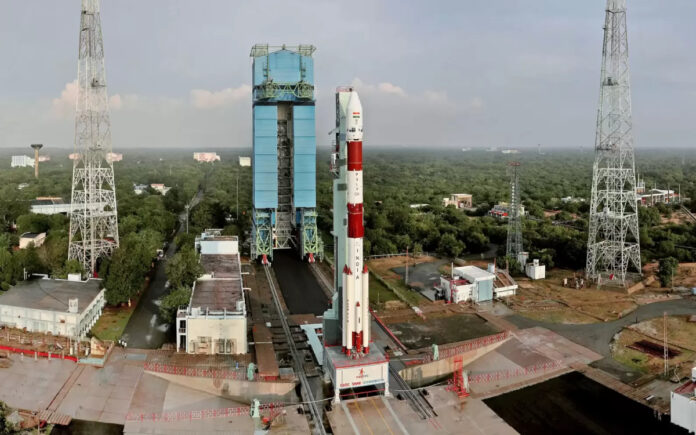Bengaluru: India’s first privately built Polar Satellite Launch Vehicle (PSLV), developed by a consortium of Hindustan Aeronautics Limited (HAL) and Larsen & Toubro (L&T), is set to launch a technology demonstration satellite (TDS-1) that will test up to 35 new indigenous technologies.
A Landmark Private PSLV Mission
Popular Indian media outlet TOI reported that Indian Space Research Organisation (ISRO) Chairman V. Narayanan revealed in an exclusive interview that the privately manufactured PSLV is in the advanced stages of realization, with ISRO providing technical oversight.The rocket, expected to be launched in the third quarter of this year, is part of a contract for five privately built PSLVs.
“It is called a technology demonstration satellite (TDS-1)… There are 35 experimental things. Among other things, along with chemical propulsion, we are also going to use electric propulsion. We are also going to demonstrate an indigenous atomic clock, quantum payloads. So, a lot of things are in store. And right now, the payload is getting realized,” Narayanan stated.
The final number of experiments on board TDS-1 is yet to be confirmed. Among the key technologies to be tested is a 300 milli-Newton (300mN) electric propulsion thruster, developed at ISRO’s Liquid Propulsion Systems Centre (LPSC). This thruster is currently undergoing life cycle testing.
ISRO had previously deployed a 75mN thruster on GSAT-9, but the 300mN thruster on TDS-1 will mark the first fully indigenous system of its kind, according to Narayanan. The organization has also developed supporting components, including power processing units, control systems, and propellant tankage.
Also Read | Russia’s Covert Military Unit Targets NATO, Intelligence Warns
Next-Generation Launch Vehicle (NGLV) Advancements
Narayanan also shared updates on ISRO’s Next-Generation Launch Vehicle (NGLV), a powerful rocket designed to carry larger payloads.
“Our first launcher, the SLV-3, had the capability of putting around 35-40 kg to Low Earth Orbit (LEO). Our heaviest rocket today, LVM-3, can carry around 8,500 kg to LEO. Now, NGLV will have a liftoff mass of around 1,000 tonnes and a height of 93 meters, more than a 30-35 storey building,” Narayanan explained.
The NGLV will feature:
- Three propulsive stages and two strap-on boosters.
- Core stage: Powered by nine LOX-methane engines, each generating 110 tonnes of thrust, with 475 tonnes of propellant.
- Second stage: Uses two LOX-methane engines with 128 tonnes of propellant.
- Upper stage: Equipped with a LOX-hydrogen cryogenic engine (C-32) with 32 tonnes of propellant capacity.
Narayanan confirmed that the configuration study for NGLV is complete, and ISRO is developing subsystems, including engines. The design for the 11 LOX-methane engines has been finalized, with fabrication clearances underway.
Also Read | U.S. 25% Tariff Threat Puts Mexican Tequila Makers on Edge
Mission studies have been completed, while rocket structures and tankage designs are in progress. ISRO is in talks with industry partners for manufacturing and is simultaneously working on test facilities to support development.
The upcoming PSLV launch and the progress on NGLV mark significant strides in India’s privatization of spaceflight and its advancements in next-generation propulsion technology.



